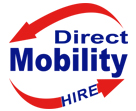Is travelling to and around your chosen destination a bore, a chore, or something you can actually enjoy if you get it right? When you need accessible travel it can be harder to get to that enjoyment part, but it’s not impossible.
London is an old, complicated city, with winding roads and deep tunnels. All this means it’s more important than ever to plan ahead when you want to visit for whatever reason. You have to think carefully about what you need to do and what you want to do (because there is a difference), and to be realistic about the time you will need to achieve these things. Delays can happen for all sorts of reasons – from transport issues to simply having too much fun, so build extra time into your plan. Consider whether any mobility equipment might make your visit simpler. Hiring a wheelchair, for example, is incredibly easy and could make a massive difference (to your energy levels as well as your luggage).
Call ahead when you can, whether it’s to a train station or an attraction you’re visiting. Some places will appear accessible on the surface, but then you might discover some ‘ifs and buts’ that might change your mind about going there. It’s always better to have this information upfront.
- Allow extra time for unexpected delays or detours
- Research accessibility at your destinations before arriving
- Consider mobility equipment rental to conserve energy and simplify travel
- Contact venues in advance to confirm accessibility features and avoid surprises
Accessible Public Transport Options in London
London Underground and Rail Services:
A good starting point is the accessibility page on the Transport for London website https://tfl.gov.uk/transport-accessibility/. It alerts you to current lift or escalator closures at Tube and overground stations, and enables you to plan a journey. This National Rail site may be useful too, depending on where you are coming from: https://www.nationalrail.co.uk/on-the-train/accessible-train-travel-and-facilities/.
The TfL website has a section specifically on wheelchair access and avoiding stairs https://tfl.gov.uk/transport-accessibility/wheelchair-access-and-avoiding-stairs, which includes maps for finding step-free stations. Step-free travel means that you don’t need to worry about gaps getting off the tube, or escalators that may or may not be running.
The Tube map shows which stations are step-free with two symbols – blue shows step-free access from the street to train, whereas white shows it from the street through to the platform. Step-free access itself can vary though – sometimes it means there’s level access along with the whole platform, sometimes it’s along part of the platform, and sometimes manual boarding ramps are required – to use these you will have to ask for help from staff, which is part of the reason why it’s so important to plan ahead.
London Bus Network:
All London bus routes are wheelchair accessible. They are served by low-floor vehicles that will have a dedicated wheelchair space and an access ramp. They’re also cheaper than the Tube. If the first one you spot has no space for you, there will be another behind it very shortly.
- Complete wheelchair accessibility
- Dedicated wheelchair spaces
- Low-floor design with access ramps
- More affordable fares than the Underground
Accessible Taxi Services:
London’s black cabs should all have a wheelchair ramp and they’re generally easy to find. However, do bear in mind the costs will mount up. You can book ahead if you use one of the numbers from the TfL site https://tfl.gov.uk/modes/taxis-and-minicabs/book-a-taxi, although there is a small charge for this.
Travelling by Car in London:
There are so many public transport routes into London that it’s easy to feel you simply must use one of them. However, using your own vehicle can work too if you don’t mind the traffic. A number of attractions have free Blue Badge parking if you call ahead to book.
River Transport on the Thames:
The Thames Clippers boats used for River Bus are all wheelchair accessible and ramps are used to board the boat. Most piers offer step-free access, except Cadogan Pier, Wandsworth Riverside Quarter Pier and London Bridge City Pier (which is very steep). Boats can make a nice change from travelling along underground and offer better views, too.
Self-Powered Navigation:
Look at what you want to do in London on a map. The initial journey into the city aside, many attractions are very close together. If you are going to just one place or a few things clustered together, you may be able to get around on your own wheels. For example, the Millennium Bridge is wheelchair accessible and is a lovely way to travel over the river from St Pauls to The Tate Modern (or vice versa). Just be aware it can get a little cold up there!
Mobility Equipment Solutions for London Visitors
If you don’t typically use mobility equipment, consider whether renting a device would enhance your London experience by:
- Conserving energy for enjoying attractions
- Reducing fatigue from extended walking
- Simplifying navigation of London’s varied terrain
Direct Mobility offers expert advice and convenient equipment rental options:
- Wheelchair hire for temporary use
- Mobility scooters for extended outdoor exploration
- Walking aids for additional stability
We can deliver directly to your London accommodation or home address. Browse our complete range of mobility products or contact us at 020 8370 7888 or hire@directmobility.co.uk for personalized recommendations.
Have a browse through our products or call 020 8370 7888 or email hire@directmobility.co.uk now for more information.
